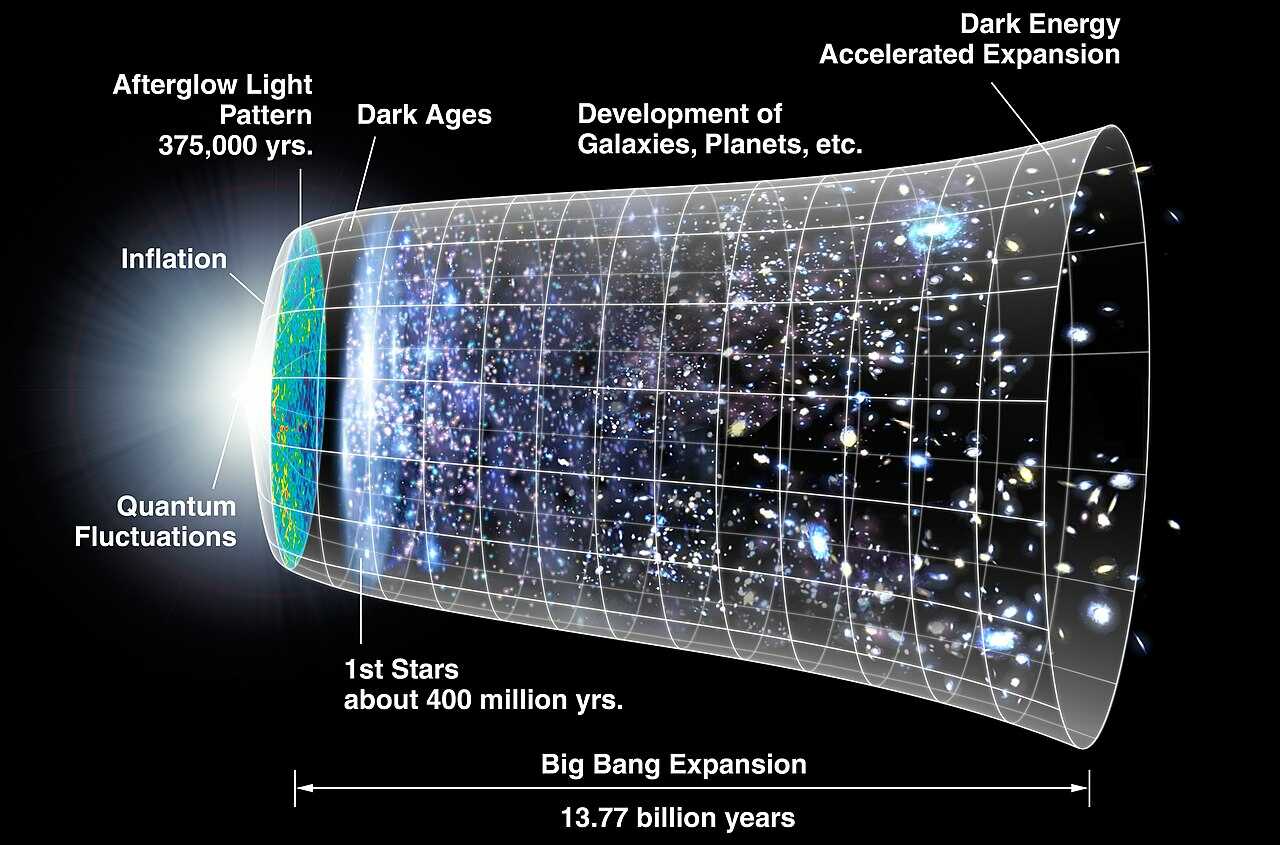The universe is a vast and mysterious place, filled with countless stars, galaxies, and celestial bodies. One of the most intriguing aspects of the universe is its expansion. Over time, the distance between gravitationally unbound parts of the observable universe has been steadily increasing. This expansion is not only a fundamental property of the universe but also a key feature of Big Bang cosmology.
In this article, we will take a deep dive into the concept of the expanding universe. We will explore its history, the dynamics behind this expansion, and the consequences it has on various aspects of the cosmos. Join us on this journey through time and space as we unravel the mysteries of the universe expanding.
The History of Cosmic Expansion
The idea of an expanding universe first emerged in the early 20th century. Astronomer Vesto M. Slipher discovered that light from remote galaxies was redshifted, indicating that these galaxies were receding from the Earth. Building upon this observation, Alexander Friedmann and Georges Lemaitre independently formulated theoretical models that described the expansion of the universe.
In 1929, Edwin Hubble observationally confirmed the findings of Lundmark and Lemaitre. Hubble’s measurements of the recession velocities of galaxies provided strong evidence for an expanding universe. This groundbreaking discovery revolutionized our understanding of the cosmos and laid the foundation for modern cosmology.
The Dynamics of Cosmic Expansion
To understand the dynamics of cosmic expansion, we need to delve into the mathematical framework that describes it. The scale of the universe’s spatial part, governed by the spacetime metric, increases over time. This expansion is quantified by the scale factor, which is proportional to the average separation between objects such as galaxies. The Hubble rate, denoted by H, measures the rate of expansion.
During the early stages of the universe, inflationary theory postulates a sudden and dramatic expansion. This inflation period, which occurred about 10^-32 seconds after the Big Bang, resulted in an exponential increase in the volume of the universe. It is believed to have resolved several key problems in cosmology, including the horizon problem and the flatness problem.
After the inflationary epoch, the expansion of the universe decelerated due to the gravitational attraction of matter and radiation. However, around 9.8 billion years after the Big Bang, the expansion began to accelerate gradually. This acceleration is attributed to the presence of dark energy, a mysterious form of energy that permeates the universe and exerts a repulsive gravitational force.
Distances in the Expanding Universe
As the universe expands, the distances between objects also increase. However, it is essential to distinguish between comoving coordinates and the actual physical distances between objects. Comoving coordinates grow proportionally with the scale factor, while physical distances are affected by the expansion of space itself.
The shape of the universe is a fascinating topic in cosmology. Observations suggest that the spatial surfaces on which stationary observers agree on the age of the universe are geometrically flat. This implies that the angles of a triangle add up to 180 degrees, similar to Euclidean geometry. However, the overall shape of the universe is still a subject of ongoing research and investigation.
Consequences of Cosmic Expansion
The expansion of the universe has profound implications for various aspects of the cosmos. One consequence is the redshift of light from distant objects. As objects recede from an observer, their light gets stretched, resulting in a shift towards longer wavelengths. This phenomenon provides valuable insights into the dynamics and history of cosmic expansion.
Another consequence is the cooling of the universe. As space expands, the energy of photons and other particles dilutes, leading to a decrease in temperature. Ultrarelativistic fluids, such as radiation, cool inversely with the scale factor, while nonrelativistic matter cools more rapidly.
The expansion of the universe also influences the density of its contents. As space expands, the energy density of matter and radiation decreases. Nonrelativistic matter follows a power law relationship with the scale factor, while radiation decreases more sharply. Exotic fluids with negative pressure, like dark energy, exhibit different density behaviors.
The Expansion History of the Universe
The expansion history of the universe can be divided into several epochs. The cosmic inflationary period, occurring shortly after the Big Bang, played a crucial role in resolving various cosmological puzzles. It was followed by the radiation epoch, during which ultrarelativistic particles dominated the energy density of the universe. This epoch was responsible for the formation of galaxies and the large-scale structure of the cosmos.
The matter epoch followed the radiation epoch, with nonrelativistic matter becoming the dominant component of the universe. During this period, cosmic expansion decelerated, providing the conditions for the formation and evolution of galaxies. Finally, dark energy began to dominate the energy density of the universe, leading to an accelerated expansion in the present epoch.
Measuring the Expansion Rate
Determining the expansion rate of the universe is a challenging task that requires precise measurements of distances and recession velocities. Scientists employ various techniques, such as using standard candles like Type Ia supernovae or studying the largest fluctuations in the cosmic microwave background. These measurements provide valuable insights into the present-day expansion rate and the evolution of the universe over time.
However, there is an ongoing tension between different measurements of the expansion rate, known as the Hubble tension. Some measurements, such as those based on supernovae, yield higher values for the Hubble constant than others, such as those derived from the cosmic microwave background. This discrepancy hints at the possibility of unknown physics or systematic errors in our current understanding of the universe’s expansion.
Conclusion
The expanding universe is a captivating subject that continues to fascinate scientists and astronomers worldwide. From its early moments to the present day, the universe’s expansion has shaped the cosmos as we know it. Understanding the dynamics and consequences of this expansion provides valuable insights into the origins and evolution of our vast universe.
As we continue to explore the mysteries of the expanding universe, new discoveries and advancements in technology will undoubtedly shed more light on its intricacies. The journey to unravel the secrets of cosmic expansion is far from over, and we eagerly await the next chapter in our quest for knowledge about the cosmos.




